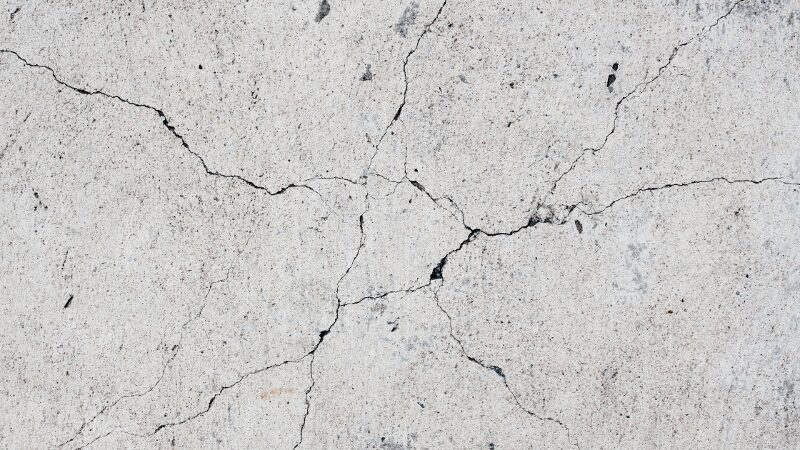“Concrete spalling” is a term that specialists use to describe the breakdown of concrete as a result of natural weathering processes or specific chemical reactions. In some cases, spalling may cause the top layer of a concrete foundation to become brittle and flake off; in other cases, larger chunks of concrete may start to crumble. When that happens, a web of hairline cracks typically develops around the problem areas, indicating the issue. In addition to foundations, spalling can affect many other concrete structures, including floor slabs, walls, walkways, driveways, and stairs.
Why Is Concrete Spalling Dangerous and When Should You Worry?
Among the different types of foundation damage that can occur in a Houston home, spalling is one of the most dangerous problems. That’s because spalling can compromise the load-bearing capacity of the foundation and ruin the structural integrity of the structure.
To better understand the dangers behind concrete spalling, let’s take a look at how this phenomenon occurs. Typically, spalling is a result of excessive moisture or water. Whether moisture or water enters concrete through cracks or through the tiny capillaries and pores that exist naturally in all concrete structures, it will create different stresses. Depending on how much water a concrete foundation absorbs, it can lead to various degrees of flaking, chipping, and/or crumbling. Spalling could also occur when the concrete hasn’t been mixed or cured properly after it was laid and/or hasn’t been allowed to harden completely before continuing the construction process.
In extreme cases, the hairline cracks that develop around the foundation areas affected by spalling may widen and deepen, causing large sections of concrete to move, shift, and even detach from the rest of the structure.
Additionally, spalling tends to worsen when freezing occurs. Since water expands when it freezes, it can produce a lot of pressure inside concrete structures. Pressure that exceeds the tensile strength of the concrete will cause the cavities within the structure to burst. This will result in more damage.
Even though a few flakes or a small crumbled area from your foundation may not seem like much of a problem, spalling will always allow more water to enter your foundation. This in turn will cause even more flaking, chipping, crumbling, and cracking, which can make your foundation more susceptible to damage.
Identifying Concrete Spalling
In general, spalling can be easily noticed during a visual inspection of your foundation. When you inspect your foundation, a few signs to look for include cracks, flakes or chips coming off the foundation, or areas of your foundation that may appear to be deteriorating. Efflorescence on walls is another indicator of concrete spalling. If efflorescence is already visible on any of your exterior walls, it’s very likely that spalling has already occurred or will soon.
Excess moisture or water pooling in the crawlspace can also be indicative of spalling. In addition, too much moisture underneath your home could cause your floor joists to warp or bend, so you may also have an uneven and/or bouncy floor. If spalling is caused by too much moisture or water in the soil around your home, your walls may start to bow as well, and your windows and doors may no longer open and close properly.
Unfortunately, many homeowners mistake spalling for the cosmetic issue it appears to be. That is what makes spalling particularly dangerous. In short, untreated concrete spalling could evolve into large structural problems, with serious consequences for your entire house.
Fixing and Preventing Concrete Spalling
The good news is that concrete spalling is relatively easy to fix. On the downside, spalling often indicates foundation damage. Thus, treating spalled concrete often means addressing the underlying issue first. For this, an experienced professional will have to inspect your foundation and determine how severe the problem is. Then, heor she can recommend the right method of repair. Once the root cause of the problem is solved, the spalling area can be repaired and resurfaced to bring your concrete foundation back to its like-new appearance.
To prevent concrete spalling in the future, you can apply sealants to the concrete surface in order to place an impermeable waterproof barrier between your foundation and the elements. Besides opting for the right type of sealant for your foundation, you should also:
- Reapply sealants as often as needed;
- Ensure proper drainage around your foundation;
- Adjust your sprinklers or place the soaker hose that you use to water the soil around your home at least 18 inches away from your foundation to avoid saturating it with water;
- Avoid using deicing salts on concrete.
To know for sure whether you have a spalling problem due to a failing foundation, we advise you to have your foundation inspected by one of our technicians as soon as possible. Not only are our technicians highly experienced, knowledgeable, and professional, but they’ve also completed many types of foundation repairs throughout the Houston-Galveston area and surrounding locations over the last 40+ years. To schedule your free foundation inspection, contact our office today!


